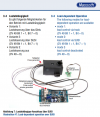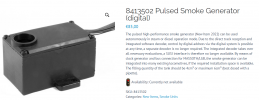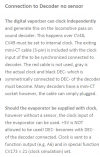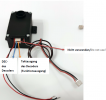Diesel2000
Registered
GregVery helpful explanation... I devined the operating modes of the MLGB and Massoth units, although it does seem that SUSI is an option with the Massoth units, since they also can have a DCC address, although certain features demand a SUSI connection.
So, would you mind just a short comment on what are the features that compel you to use MFX as opposed to DCC, would really like to hear from someone "facile" on his perception of advantages.
Greg
With what I've used so far the only real advantage to MFX is that it self registers the decoder - address and functions - to the CS3. In the case of the CS3 and MSD3 decoders in LGB locos it assigns all the icons to functions keys in the CS3, and loco picture, and takes care of addressing because every address in MFX decoder address is unique (caveat I know thats not totally correct). What that means in the real world is just that it takes way less time to set up a loco in the CS3 with MFX vs DCC IF you want to apply the function icons, loco pictures, etc. I dont think from an actual operating perspective there is any real difference. Its nice to just remember what icons represent which type of function as opposed to each F key number and which assignment was made to it. Many of my locos have 24 or more functions and try as I might they are not always consistent loco to loco.
The real reason I want to use MFX and the CS3 is to function map the MSD3 decoders to my liking, which is amazingly difficult under DCC as opposed to using the MDecoderTool with the CS3 in MFX. The ESU Loksound 5 XL decoders are also very difficult to program under straight DCC protocol, and the LokProgrammer makes that very to easy do, though its not doing it in MFX I dont believe. The final point on this is the ability to use something like JMRI-decoder pro, which does not support the Massoth CS, but does the CS2/3.
Tim
Last edited:




